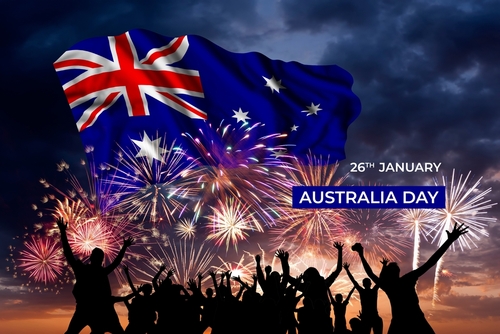Every January 26th, Australia marks its national holiday, Australia Day. For many, it’s a summer day filled with barbecues, beach cricket, and community gatherings under the sun. But beyond the celebrations, Australia Day holds a complex and deep significance. It’s a day to reflect on the nation’s history, celebrate its diverse society, and look toward its future.
As 2026 approaches, it’s a perfect time to understand the traditions, history, and evolving conversations surrounding this important day. Whether you’re in Australia or part of the global diaspora, here’s what you need to know about Australia Day.
The History and Origins of Australia Day
Australia Day marks the anniversary of January 26, 1788, when Captain Arthur Phillip raised the British flag at Sydney Cove and proclaimed British sovereignty over the eastern part of the continent. This event signaled the founding of the colony of New South Wales.
For the early European settlers, the anniversary was a day to celebrate their new home. It was first officially celebrated in New South Wales in 1818. Over the following decades, other colonies began to recognize the date as well. It wasn’t until 1994, however, that all states and territories uniformly observed January 26th as a public holiday.
For many First Nations peoples—Aboriginal and Torres Strait Islander people—this date represents something very different. It marks the beginning of dispossession, violence, and the loss of their culture and land. For this reason, many refer to it as “Invasion Day” or “Survival Day.” This perspective is a crucial part of the national conversation, highlighting a painful history and the ongoing journey toward reconciliation.
How Australia Day is Celebrated Today
Modern Australia Day celebrations reflect the country’s multicultural fabric. While the day is marked in many different ways, several key traditions stand out.
Food, Family, and Friends
For millions of Australians, the day is a chance to relax and enjoy the summer weather with loved ones. The classic “Aussie Barbie” (barbecue) is a staple, with sausages, burgers, and prawns sizzling on grills across the country. Many families also enjoy picnics in local parks or head to the beach for a swim and a game of cricket. Foods like pavlova—a meringue-based dessert—and lamingtons are also popular treats.
Official Ceremonies and Community Events
Across the nation, towns and cities host official Australia Day events. These often begin with citizenship ceremonies, where thousands of people formally become Australian citizens, highlighting the country’s identity as a nation of immigrants.
Awards are also presented to honor Australians who have made significant contributions to their communities. In major cities like Sydney and Perth, spectacular firework displays light up the night sky, drawing large crowds to harbors and riverbanks.
Music and Festivals
Live music is a big part of the celebration. Many councils organize free outdoor concerts featuring popular Australian musicians. These events bring people from all walks of life together to enjoy shared cultural experiences. In diaspora communities, from London to New York, Australians often gather at local pubs or host their own barbecues, sharing a piece of home with friends and new acquaintances.
Evolving Trends and Conversations
In recent years, the conversation around Australia Day has shifted significantly. There is a growing movement to change the date of the national holiday to one that all Australians can celebrate together, without the painful historical context of January 26th.
This movement has led to new traditions:
- “Invasion Day” or “Survival Day” Rallies: Many Australians, both Indigenous and non-Indigenous, participate in marches and rallies to acknowledge the suffering of First Nations peoples and call for greater understanding and justice.
- WugulOra Morning Ceremony: In Sydney, the day begins with the WugulOra (One Mob) Morning Ceremony at Barangaroo. This event honors Australia’s First Nations culture and heritage with performances, speeches, and the raising of the Aboriginal and Torres Strait Islander flags alongside the Australian flag.
- Focus on Inclusivity: Many community events are now placing a greater emphasis on acknowledging Australia’s complete history and celebrating the contributions of its First Nations and multicultural communities.
Frequently Asked Questions
What is the significance of January 26th?
January 26th marks the date in 1788 when the First Fleet of British ships arrived at Sydney Cove and Captain Arthur Phillip raised the Union Jack to claim the land as a British colony.
Why is Australia Day controversial?
For many Aboriginal and Torres Strait Islander people, January 26th symbolizes the beginning of colonization, which led to the loss of their land, culture, and lives. They refer to it as “Invasion Day” or “Survival Day” to honor the resilience and survival of their people and culture.
What are some traditional Australia Day foods?
Classic barbecue fare like sausages, burgers, and steak are very popular. Other iconic Australian foods enjoyed on the day include pavlova, lamingtons, and fresh seafood, especially prawns.
How do Australians celebrate around the world?
Australians living abroad often gather for barbecues, visit Australian-themed pubs, or stream local celebrations from back home. It’s a day to connect with fellow expats and share a sense of national pride and camaraderie.
